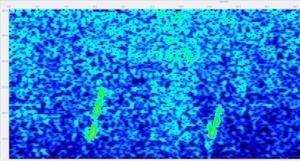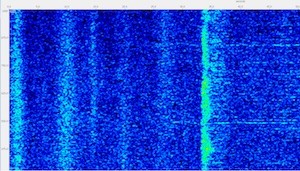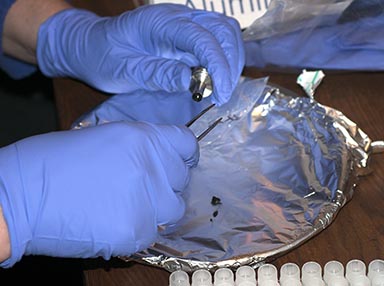SCIENCE IN THE SEA: Studying Southern Right Whales
13 February, 2018
Find out what the South Georgia Right Whale Expedition team have been up to during their first few weeks sailing in the waters around South Georgia.
Firstly, Susannah Calderan tells us what it has been like tracking southern right whales around South Georgia using their underwater vocalisations.
So far during our time in South Georgia the weather has been a challenge, we have had a combination of strong winds and fog which make it difficult to see animals. This makes it even more useful to be able to find whales by tracking their underwater vocalisations (Find out how we do this in one of our previous blogs).
As far as we know, the vocalisations of southern right whales in their feeding grounds, such as South Georgia, haven’t been recorded before, let alone used to track the whales. But we do know what sounds southern right whales make in their breeding grounds, and acoustic data is available from right whales in the Northern Hemisphere.
What we were expecting was a fairly limited repertoire of low frequency tonal sounds made infrequently and irregularly (unlike Antarctic blue whales, which are very reliable callers). The most commonly heard sound from right whales elsewhere is usually upcalls. These are brief sounds which rise slightly in frequency and sound like gulps; they are thought to be contact calls. Right whales also produce sounds called ‘gunshots’, a loud, broadband sound which sounds like a gun being fired. We also expected there might some confusion with humpback whales, whose vocalisations can sound very similar to those of right whales.
Acoustic tracking has gone really well so far. We have been able to identify southern right whale calls, resolve the direction they are coming from, and use those bearings to find the whales themselves. As anticipated, they don’t make calls very often, and we usually have to listen to our sonobuoys and watch the spectrograms – visual representations of the detected sounds – for several hours just to catch a few brief calls.


These can both lead us to the whales, and confirm that we have indeed been listening to right whales and not, for example, humpback whales. We are also, very importantly, characterising and starting to compile a record of the vocal repertoire of Southern right whales on their feeding grounds. Mostly we have detected upcalls and gunshots, and can probably hear whales that are around 10-15 miles away from our sonobuoy. Using our sonobuoy methodology to track and find southern right whales in real time is proving to be both tricky and exciting, and we’re very happy so far with the progress we’ve made.
Secondly, Dr Emma Carroll explains more about the importance of collecting skin samples from southern right whales during the expedition.
A major part of our work here in South Georgia is to collect small skin samples from the southern right whales we find. Skin samples are collected using a small dart fired from either a modified veterinary device or cross bow. The tip of the dart hits the whale and pulls out a small plug of skin about the size of your fingernail.

These little skin samples can tell us a lot about a whale: who they are, who they are related to, where and what they’ve been eating, and, if we get a bit of whale fat or blubber, we can also tell if they’re pregnant and how stressed they are. We get this information using different approaches. Firstly, we can get good quality DNA from these skin samples. Using DNA profiles, we can individually identify whales and their relatives. We are also planning on developing a way of ageing southern right whales using DNA over the next few years – excitingly, this has already been done for humpback whales. We can also compare the DNA profiles from whale samples around South Georgia with whales sampled around wintering grounds in Argentina. In this way, we can see if the same whales, or related whales, are visiting South Georgia in the summer and Argentina in the winter.
Next, we can use microchemical markers called stable isotopes in the skin to investigate whale diet. Stable isotope signals can vary predictably depending on things like latitude, how far off shore and the level of the food chain at which the whale is feeding. This enables us to investigate where and what the whales have been feeding on.
Blubber can also provide a lot of useful information about a whale, using hormone analysis. For example, we can look at the levels of a hormone called progesterone to see if the whales are pregnant. Another hormone, cortisol, can increase in response to stress. Some great work in North Atlantic right whales shows that there is chronic, high-level stress in whales living off the coast of USA. It will be interesting to see if the whales here are stressed, possibly due to fasting on their wintering ground, or not.